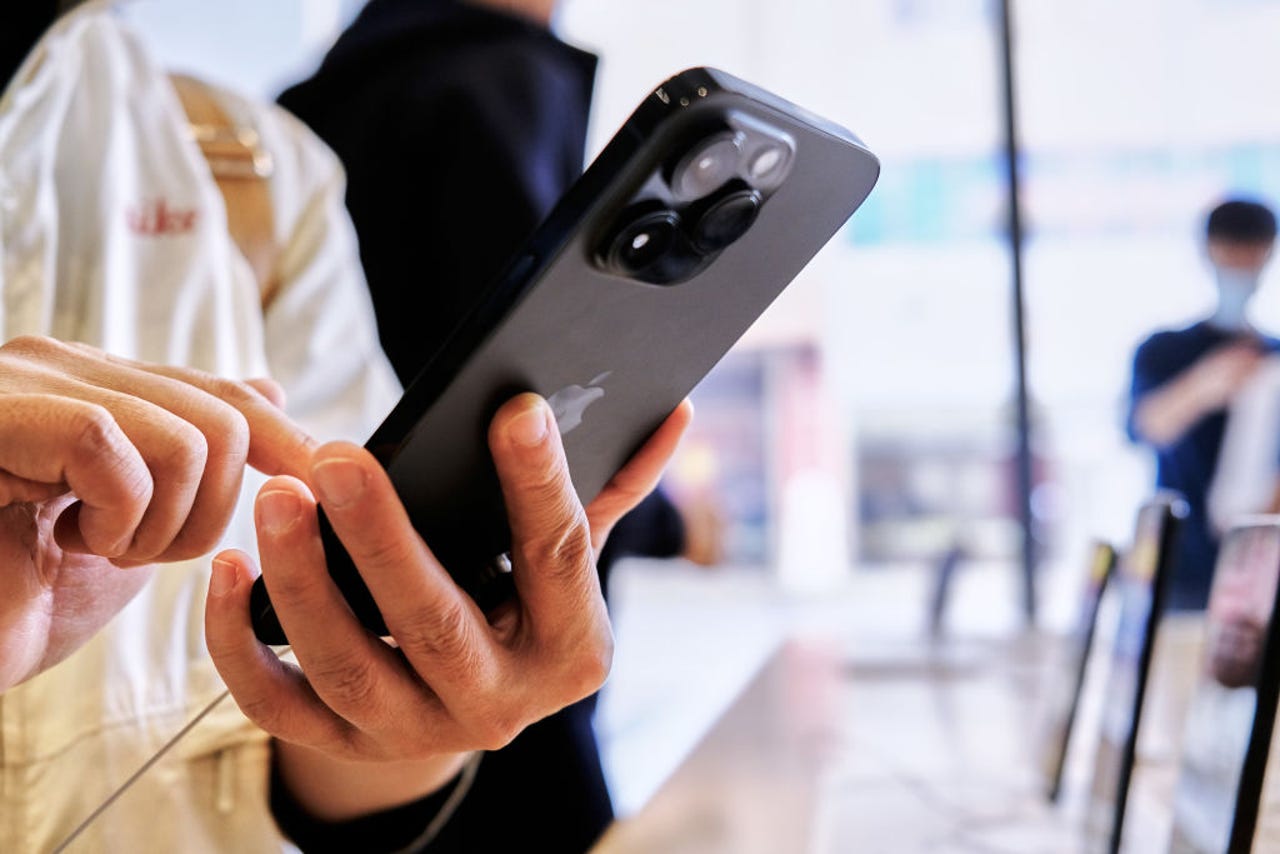'ZDNET Recommends': What exactly does it mean?
ZDNET's recommendations are based on many hours of testing, research, and comparison shopping. We gather data from the best available sources, including vendor and retailer listings as well as other relevant and independent reviews sites. And we pore over customer reviews to find out what matters to real people who already own and use the products and services we’re assessing.
When you click through from our site to a retailer and buy a product or service, we may earn affiliate commissions. This helps support our work, but does not affect what we cover or how, and it does not affect the price you pay. Neither ZDNET nor the author are compensated for these independent reviews. Indeed, we follow strict guidelines that ensure our editorial content is never influenced by advertisers.
ZDNET's editorial team writes on behalf of you, our reader. Our goal is to deliver the most accurate information and the most knowledgeable advice possible in order to help you make smarter buying decisions on tech gear and a wide array of products and services. Our editors thoroughly review and fact-check every article to ensure that our content meets the highest standards. If we have made an error or published misleading information, we will correct or clarify the article. If you see inaccuracies in our content, please report the mistake via this form.
What is Security Keys for Apple ID and why does it matter?


Apple's latest software update has brought a range of updates and fixes for iOS and iPadOS 16.3, macOS Ventura 13.2, as well as watchOS 9.3.
But one of the update's new features could be particularly important for helping you manage the cybersecurity of your Apple Mac or iPhone and keeping your usernames, passwords, and other sensitive information safe from hackers -- Security Keys for Apple ID.
What are Security Keys for Apple ID?
Security Keys for Apple ID allows you to use a hardware key as an extra layer of authentication to help keep your Mac safe from unauthorized access.
Also: The best security keys: Protect your online accounts
Hardware keys commonly look like small USB thumb drives and provide an additional layer of multi-factor authentication to prevent unauthorized access to your device and accounts.
Depending on the model, the hardware security key either plugs into your Mac or iPhone with a USB-A, USB-C or lightening cable, or uses a near-field communication (NFC) to make the link. If you have a security key registered to your accounts, it's difficult for an attacker to gain access.
How does Security Keys for Apple ID work?
Like any form of multi-factor authentication (MFA), Security Keys for Apple ID is designed to ensure that you're the only one who can access your account -- in this case, your Apple ID account.
If used correctly, it can provide you with an extra layer of protection against phishing, social-engineering scams, and many other cyberattacks. The idea is that even if a hacker does know your password, they can't access your account without also having access to the physical key.
The first layer of authentication is your Apple ID username and password. In this case, the physical key is the second layer of authentication -- you need it in your possession to access your account, something that prevents attackers from remotely stealing MFA access codes sent using an app or SMS.
Because while MFA applications do help to keep accounts secure, hackers can still remotely intercept codes.
If your account is protected with Security Keys for Apple ID, it's much harder for someone to access your account, because not only would they need your password, they'd need physical access to your device and your hardware key.
What do I need to set up Security Keys for Apple ID?
Before you can use Security Keys for Apple ID, there are several forms of hardware and software you'll need to set it up. These are:
- At least two FIDO Certified security keys that work with the Apple devices that you use on a regular basis.
- iOS 16.3, iPadOS 16.3, or macOS Ventura 13.3, or later installed on all of the devices where you're signed in with your Apple ID.
- Multi-factor authentication set up for your Apple ID.
- An up-to-date web browser.
- To sign in to Apple Watch, Apple TV, or HomePod after you set up security keys, you need an iPhone or iPad with a software version that supports security keys.
What hardware keys work with Security Keys for Apple ID?
Security Keys for Apple ID works with any FIDO Certified security key. Examples given by Apple include:
- YubiKey 5C NFC (works with most Mac and iPhone models)
- YubiKey 5Ci (works with most Mac and iPhone models)
- FEITIAN ePass K9 NFC USB-A (works with older Mac models and most iPhone models)
Also: YubiKey 5C NFC: The USB security key that everyone's been waiting for
Other FIDO Certified security keys are available. You should make sure that the key is certified and that there's a connector that works with your Mac or iPhone. You need to add and maintain at least two keys to use Security Keys for Apple ID -- and you can add up to six.
How do I add Security Keys for Apple ID to my account on my iPhone or iPad?
Open the Settings app.
- Tap your name, then tap Password & Security.
- Tap Add Security Keys, then follow the onscreen instructions to add your keys.
- Review the devices associated with your Apple ID, then choose to:
- Stay signed into all active devices.
- Select devices that you don't want to continue to have access to your account and sign out of them.
How do I add Security Keys for Apple ID to my account on my Mac?
From the Apple menu , choose System Settings, then click your name.
- Click Password & Security.
- Next to Security Keys, click Add, then follow the onscreen instructions to add your keys.
- Review the devices associated with your Apple ID, then choose to:
- Stay signed into all devices.
- Select devices that you don't want to continue to have access to your account and sign out of them.
How do I stop using Security Keys for Apple ID?
If you decide you no longer want to use a hardware key to secure your account, to stop using Security Keys for Apple ID:
- Open System Settings, click your name, then click Password & Security.
- Click Security Keys, then click Remove All Security Keys.
- After this, your Apple ID reverts to using the six-digit verification code for multi-factor authentication.